Traveling through mesmerizing Japan, Old and New
In the evening, tour guides lead their groups down eerily quiet streets of Gion, the district where the geisha live.
 Glimpses of Japan / Ritu Marwah
Glimpses of Japan / Ritu Marwah
The maiko shuffled into the room, her face talcum powder white, thin lips drawn red, her hair bun adorned with combs and baubles. The long sleeves of her baby blue silk kimono created a curtain that hid behind it her slender frame. She was seventeen years of age.
The multi-course lunch with her was organized by Minami, who runs the Maiko Ozashiki Experience in Kyoto by Utage Kaigai. The English interpreter, a 32-year-old Japanese mom, felt gauche and starstruck in front of the idolized geisha-in-the-making.
Also Read: A mom's Thanksgiving feast
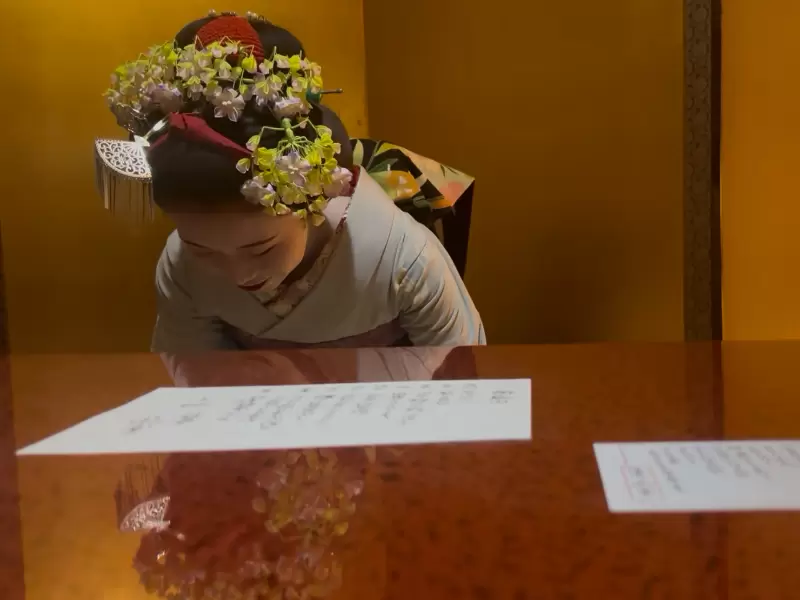 Maiko Ozashiki Experience / Ritu Marwah
Maiko Ozashiki Experience / Ritu MarwahMaikos are caterpillars to the geisha butterfly. At the age of twenty they shorten their obi or belt, tone down the colors of their kimonos, and hide their hair in a superbly crafted wig. They are then ready for business as a gracious entertainer companion to businessmen, lucrative business-opportunity-providing multinational clients, or luxury-experience-seeking tourists. Her geisha mother (head of a household of seven maikos and three geisha) has traveled to Tokyo and even Singapore at the request of clients.
One of the most famous geisha, the maiko said, is a model. She borrowed the interpreter’s phone to pull up her picture, scrolling through the phone with the speed and comfort of a teenager. Maikos are not allowed phones. Nor are they allowed to dip their hands in water. Their hands are their real estate.
In the evening, tour guides lead their groups down eerily quiet streets of Gion, the district where the geisha live. Geisha and their maikos live in hanamachi or “flower towns”. Quintessential red and white Kyoto lanterns light up doorways on the cobbled streets. The name of the geisha house is calligraphed in Japanese letters on the front of the door. Tour guides urge their groups to try to get a glimpse of the maiko (dancing dolls) as they are whisked past in taxis. Their allure is enhanced by their elusiveness. Tatami-matted balconies are firmly shut in the face of gawking tourists.
Time has stood still in this neighborhood.
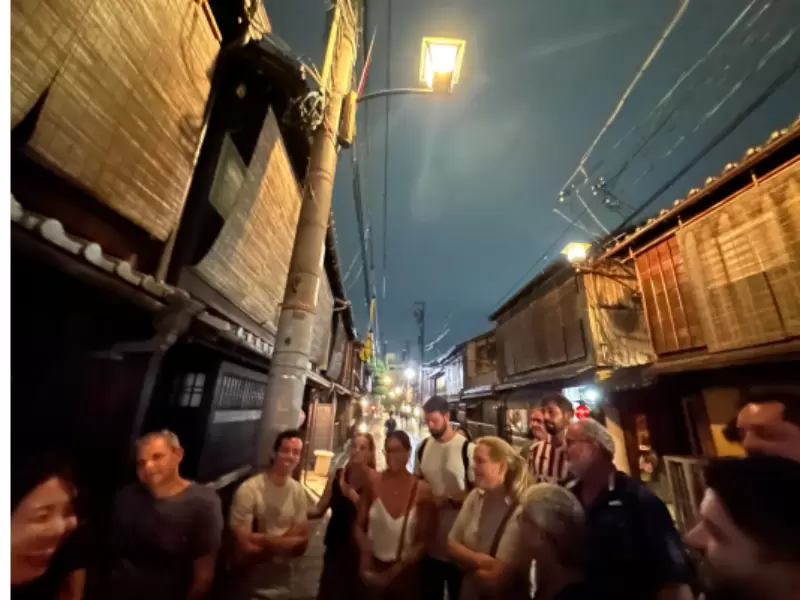 Walking Tour / Ritu Marwah
Walking Tour / Ritu Marwah
Tourists are transported to 14th-century Japan. Twenty-six years after the novel Memories of a Geisha by Arthur Golden lifted the veil on the lives of these elegant, tantalizing entertainers, ‘Makanai: Cooking for the Maiko House,' a fictional Netflix drama based on a manga about two girls in Kyoto, continues to keep their fame alive.
An immersive Digital Art Museum is a not-to-be-missed experienceTokyo is about a 2-hour Shinkansen bullet train ride from Kyoto. In Tokyo, the Doubletree Hilton Ariake sits abutting Odaiba, as part of Tokyo Bay's Waterfront City. A large man-made island originally built for military defense in the 1850s, Odaiba is redeveloped into a modern entertainment and commercial hub known for its futuristic architecture, shopping malls, museums, and waterfront parks.
The Yurikamome Line runs on an elevated track, offering scenic views of Tokyo Bay and passing over the Rainbow Bridge to connect Shimbashi and Toyosu. This driverless line offers a futuristic ride as it circles the Tokyo waterfront.
Two stops on the Yurikamome Line from the Doubletree is the "body immersive" museum of teamLab Planets, where visitors are advised to immerse themselves physically in the massive artwork spaces.“Perceive them with your body, and become one with the art”. Visitors walk barefoot through water and interact with multi-sensory artworks in an unforgettable experience.
teamLab Borderless (officially MORI Building DIGITAL ART MUSEUM: teamLab Borderless) in Azabudai Hills in central Tokyo (Minato-ward) is part of the same group. It houses a not-so-ordinary tea house. EN Tea House is a digital art piece where flowers bloom inside your teacup and respond to your actions. As long as there’s tea, the blossoms continue.
 Tea where flowers blossom at teamLab Borderless / Ritu Marwah
Tea where flowers blossom at teamLab Borderless / Ritu MarwahOne of the attractions is the Sketch Aquarium, a digital aquarium where drawings come alive. Visitors color a fish, an octopus, or any sea creature on a paper, then scan it. Their sea creature floats off their paper into the aquarium and swims around them. It is magical to birth a member of the Sketch Aquarium.
Their sea creature floats off their paper into the aquarium and swims around them. It is magical to birth a member of the Sketch Aquarium.
Tokyo Bay, where digital and real fish swim
Tokyo Bay offers surreal art at teamLab Planets and a real-life fish ballet.
Visitors waiting to take the water bus catch sight of sudden ripples in the water. The fish of Tokyo Bay jump out of the water in a dance of splashing ballet dancers. They pirouette in the air, some taking repeated leaps. What makes the grey mullet of Tokyo Bay jump out of the water? They are escaping predators or hunting, say some; others say they come up for oxygen.
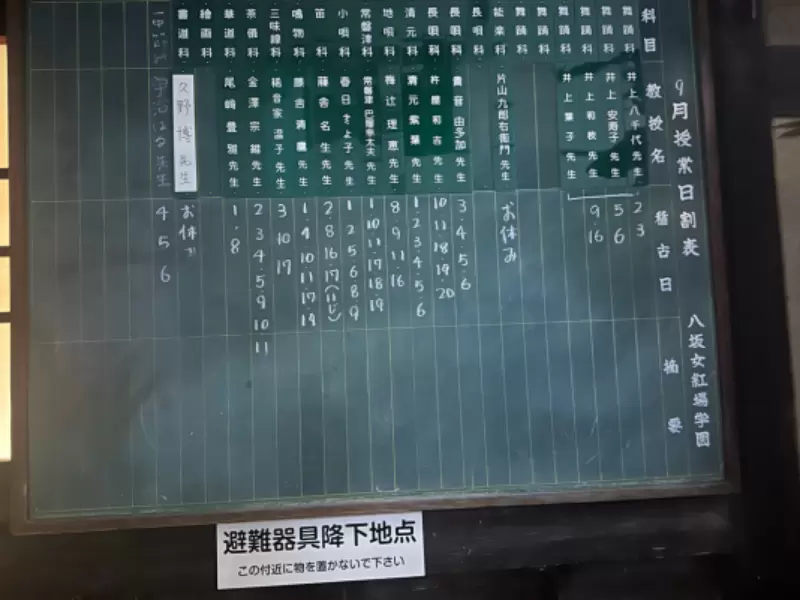 Training schedule for Maikos / Ritu Marwah
Training schedule for Maikos / Ritu MarwahTake a waterbus to the 4th century
From Odaiba, the water bus transports tourists up the very same Sumida River, where 1400 years ago two fishermen found the statue of the Kannon goddess. The ancient and beautiful Senso-ji Temple was founded in 645 AD. Asakusa would become the site of kabuki theaters and Asakusa kagai, home of the geishas in the Edo period. Asakusa is one of
Tokyo's "Rokkaigai" (six geisha districts) and still has streets with a traditional Japanese atmosphere.
The 250-meter-long shopping street leading to the temple dates back to the Edo period and is among Japan's oldest. Young and old rent kimonos from the shops for great Instagrammable moments.
At the shrine, the largest lantern, weighing 700 kilograms hangs at the Kaminarimon Thunder Gate.
Traditional Japanese snacks, souvenirs like monogrammed chopsticks, hats, bags, scarves are snapped up for grandchildren and friends to take back home.
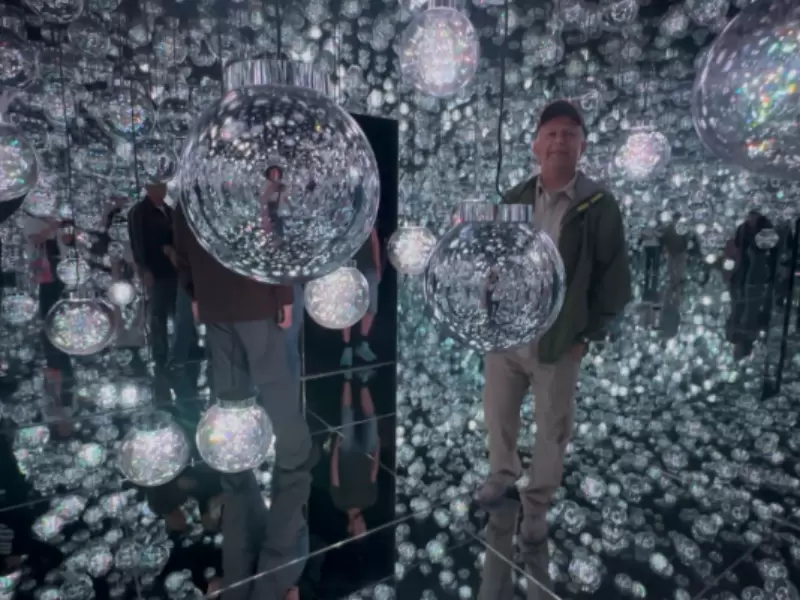 teamLabs Museum / Ritu Marwah
teamLabs Museum / Ritu MarwahOn a manga spaceship
Departing down the river in futuristic Emeraldas, the metallic, spaceship-like boat designed by manga artist Reiji Matsumoto, the visitors float out of Asakusa to head back to modern Japan, where they stay at the Hilton Doubletree, where linen sleeping suits awaited them —a special touch of unexpected luxury.
Places to stay in Kyoto:
Hilton Garden Inn Kyoto Shijo Karasuma offers the comfort and convenience of modern Japan. The attentive staff anticipate every need of Western guests, creating a home-away-from-home experience in the heart of Kyoto.
Doubletree by Hilton Kyoto Higashiyama offers a taste of traditional Japan. Stay in Japanese-style rooms with tatami mats, shoji screens, and low beds. Unwind in its relaxing public bath after a day spent exploring the temples.
Places to stay in Tokyo
Doubletree Hilton Ariake is in the heart of modern Japan, sandwiched between two train stations and a taxi stand, and within easy reach of the water bus plying Tokyo Bay. It is also a stop on the limousine bus service from Haneda Airport.
ADVERTISEMENT
ADVERTISEMENT
E Paper
Video



 Ritu Marwah
Ritu Marwah 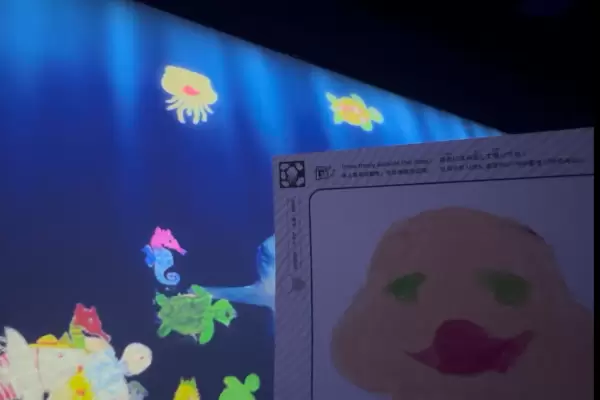
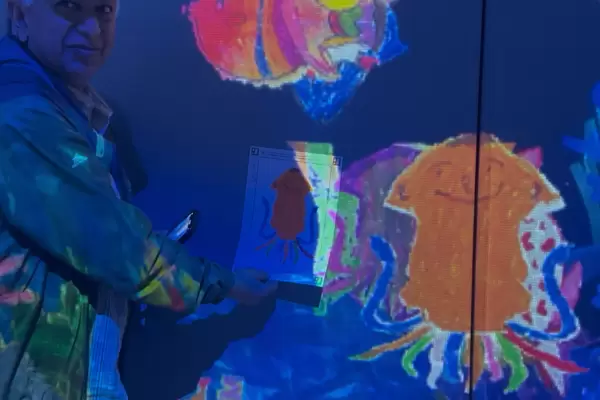













Comments
Start the conversation
Become a member of New India Abroad to start commenting.
Sign Up Now
Already have an account? Login